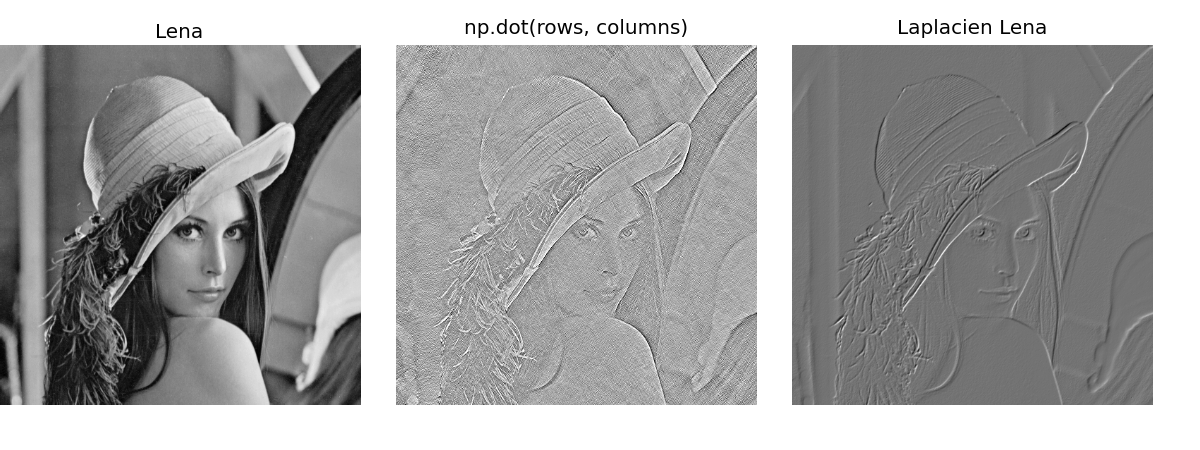Scipy : boite à outils d’algorithmes¶
Optimisation¶
>>> def f(x):
... return x**3 - x**2 - 10
>>> from scipy import optimize
>>> optimize.fsolve(f, 1)
2.5445115283877615
Statistiques et nombre aleatoires¶
>>> a = np.random.random(size=1000)
>>> bins = np.arange(-4, 5)
>>> bins
array([-4, -3, -2, -1, 0, 1, 2, 3, 4])
>>> histogram = np.histogram(a, bins=bins)
>>> bins = 0.5*(bins[1:] + bins[:-1])
>>> bins
array([-3.5, -2.5, -1.5, -0.5, 0.5, 1.5, 2.5, 3.5])
>>> from scipy import stats
>>> b = stats.norm.pdf(bins)
In [1]: pl.plot(bins, histogram)
In [2]: pl.plot(bins, b)

Manipulation d’images¶
from scipy import ndimage
l = sp.lena()
pl.imshow(ndimage.gaussian_filter(l, 5), cmap=pl.cm.gray)

Interpolation¶
x = np.arange(10)
y = np.sin(x)
pl.plot(x, y, '+', markersize=10)
from scipy import interpolate
f = interpolate.interp1d(x, y)
X = np.linspace(0, 9, 100)
pl.plot(X, f(X), '--')
f = interpolate.interp1d(x, y, kind='cubic')
X = np.linspace(0, 9, 100)
pl.plot(X, f(X), '--')

Interlude¶


l = sp.lena()
l = l[235:235+153, 205:162+205]
t = pl.imread('tarek.jpg')
t = t[::-1, ...]
t = t.sum(axis=-1)
pl.figure()
pl.imshow(t, cmap=pl.cm.gray)
pl.axis('off')
pl.figure()
pl.imshow(l, cmap=pl.cm.gray)
pl.axis('off')
t = t.astype(np.float)
t /= t.max()
l = l.astype(np.float)
l /= l.max()
pl.figure()
pl.imshow(t + l, cmap=pl.cm.gray)
pl.axis('off')

Algebre Lineaire¶
“blanchissement” de Lena:
rows, weight, columns = np.linalg.svd(l, full_matrices=False)
l_ = np.dot(rows, columns)
